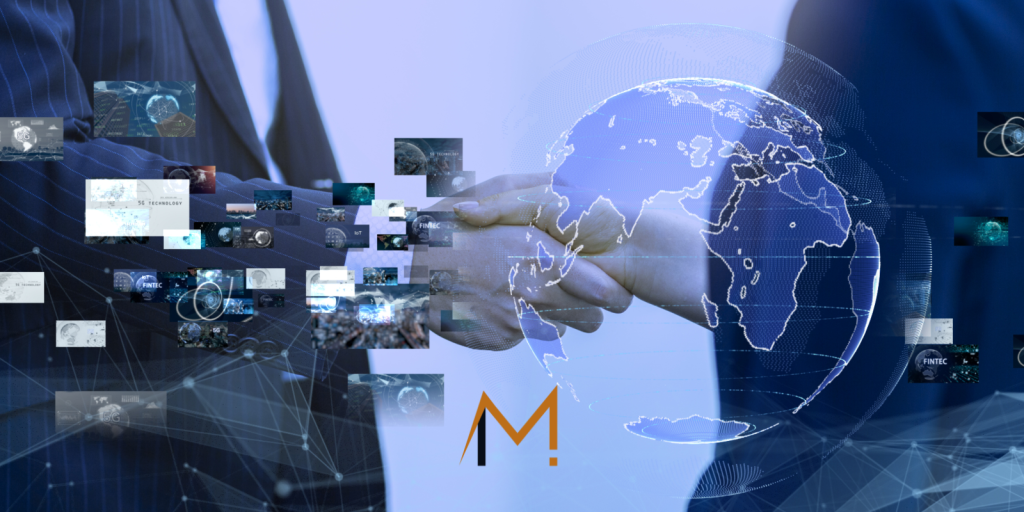Lets Reading
How Does OCR Technology Improve Accuracy and Efficiency in Business?

How Does OCR Technology work on Improve Accuracy and Efficiency in Business?
Businesses deal with a large volume of paper and digital documents. It is time-consuming and easy to make mistakes when manually entering data from these papers. OCR technology is useful for extracting and analyzing data in many ways, especially when working with huge quantities of handwritten or printed documents.
OCR (optical character recognition) technology is used all the time by businesses. It increases accuracy and efficiency in various tasks by automating data extraction from physical documents and images. This technology is essential to the processing and digitization of scanned documents. Let’s have a look at the effects of this technology on business efficiency in detail.
What is OCR?

The term “optical character recognition” (OCR) refers to a technology that can recognize and extract text from images as well as convert it into a format that machines can read. You can modify, distribute, store, search, and use this converted text for any kind of data processing. Sometimes OCR is referred to as text recognition. It saves time because it automates the process of entering and extracting data by hand. OCR technology helps businesses get data out of documents more easily.
Optical Character Recognition (OCR) systems use both hardware and software to convert Image to text. The hardware component, an optical scanner, reads or copies text, while the software performs advanced processing. The software can also recognize various languages and handwriting styles using artificial intelligence (AI).
Benefits of OCR Technology

Here are some of the major benefits of OCR data extraction:
High Accuracy
OCR technology improves accuracy by reducing the mistakes that happen when people enter data by hand. Automated data extraction makes sure that information is recorded consistently and correctly. It lowers the chance of mistakes that would happen if someone was watching over it. This level of accuracy is very important for keeping data safe, especially in fields like healthcare and finance, where accuracy is very important. OCR helps businesses keep up high standards of operational excellence by making sure that data processing is consistent and reliable.
Increased Efficiency
OCR technology greatly improves efficiency and output by automating the data extraction process. Instead of typing information into computers from paper documents, OCR quickly turns printed or handwritten text into digital format. This automation not only saves time but also frees up workers to focus on more important tasks, which makes the whole company more productive. Digitizing documents makes it easier to get information quickly, which speeds up and simplifies business operations.
Cost reduction
It is a cost-effective solution, as it eliminates the need to hire additional professionals for data extraction and entry. It is one of the most important benefits of the OCR data entry method. It helps businesses save on costs associated with manual labor. This tool also helps in removing various other costs, such as copying, printing, shipping, etc. It reduces the need for physical storage space for paper documents.
Less paper consumption
Because OCR technology digitizes documents, less paper is used, which benefits the environment by reducing deforestation and carbon emissions.
Searchability
When OCR turns a text into a digital file, it can be searched, making it easy for people to find specific information in documents. This helps business people quickly find phone numbers, addresses, names, and other information.
Better customer service
Customers usually want fast, easy ways to store and get documents in a structured way. OCR makes customer organizing for businesses smooth and greatly improves their experience online.
Applications of OCR in Businesses

Businesses can use optical character recognition (OCR) technology in several ways to make their work more efficient and get more done. Here are some of the common applications of OCR in business:
Data Extraction
OCR can automatically extract data from physical documents like invoices, receipts, and forms. This eliminates the need for manual data entry, which is time-consuming and can lead to mistakes. After the data is extracted, it can be put into databases, spreadsheets, or other programs.
Document Management
Most businesses used to store their data on paper or a mix of paper and digital records. That is why it would be very hard for anyone to quickly and accurately get data. Now that we have technology and OCR, documents can be scanned, indexed, sorted, and stored automatically, with no extra work on our part. Using OCR, businesses can digitize and archive physical documents, which simplifies the process of searching, retrieving, and managing records.
Invoice Processing
Invoice processing can be a slow and error-prone task with manual data entry. OCR can automatically extract information from invoices, including details about the vendor, amounts, and dates. It eliminates mistakes and speeds up processing, allowing businesses to pay bills faster. It frees up staff for more strategic tasks.
Form Processing
Scanning and turning handwritten forms into editable text using OCR technology makes it easier to gather and process data.
Common Businesses Using OCR Technology
Healthcare
OCR technology makes it simpler to process medical records, which results in fewer handwritten errors. For easy and quick access to health information, it speeds up the filing and retrieval of medical records. By keeping patient records, prescriptions, and medical forms digital, healthcare settings can make data more accurate and easier to get to.
Law Enforcement
OCR technology helps law enforcement agencies all over the world by making data processing and gathering easier. It helps in identifying uninsured, stolen, and criminal automobiles. OCR systems can also track when a car enters and exits and charge consumers based on the duration they park. It transposes serial numbers and VINs, scans IDs and driver’s licenses precisely, and reduces errors.
Legal Industry
To digitize and search through large volumes of legal documents, lawyers and other legal professionals can use optical character recognition (OCR). This makes research and case preparation more efficient.
Banking and Finance

Financial transactions involve a huge amount of data entry. Manual processing of this data takes a lot of time and effort. OCR technology can help businesses comply with regulatory requirements by ensuring accurate and organized financial records. This can also lead to cost savings by reducing the need for manual data entry and potential errors. OCR can speed up the process of processing checks, loan applications, and other financial documents. This makes the financial sector more efficient.
Conclusion
OCR technology is a powerful way for businesses to get rid of the problems that come with working with paper and entering data by hand. OCR makes things much more accurate, faster, and cheaper by automatically extracting data from documents and images. OCR helps businesses speed up a wide range of tasks, from managing documents and processing invoices to doing legal research and helping customers. It will be used in even more fields as OCR technology keeps getting better.




